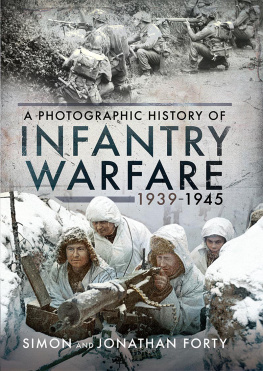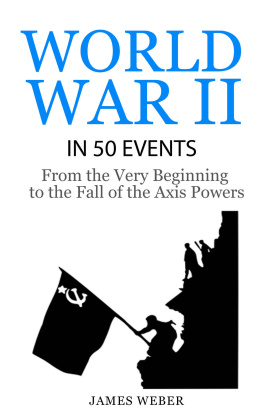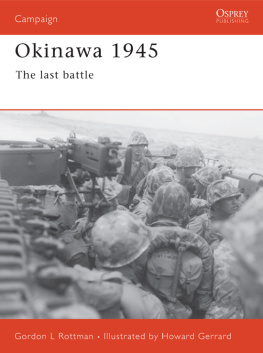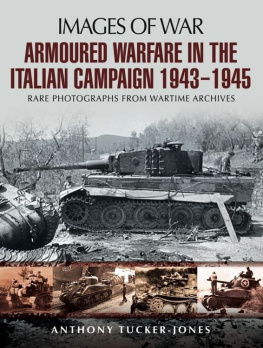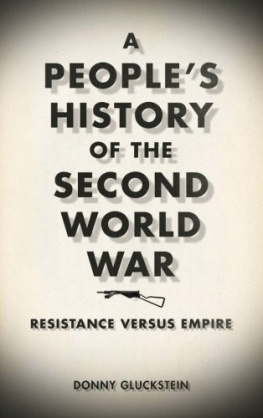Instruments of Darkness
Instruments of Darkness
The History of Electronic Warfare, 19391945
Dr Alfred Price
Frontline Books
Instruments of Darkness
The History of Electronic Warfare, 19391945
A Greenhill Book
First published in 1967 by William Kimber & Co., London
Expanded edition published in 1977 by
Madonald and Janes Publishers, London
Revised hardback edition published in 2005 by
Greenhill Books, Lionel Leventhal Limited
www.greenhillbooks.com
This paperback edition published in 2017 by
Frontline Books
an imprint of Pen & Sword Books Ltd,
47 Church Street, Barnsley, S. Yorkshire, S70 2AS
For more information on our books, please visit
or write to us at the above address.
Copyright Alfred Price, 1967, 1977, 2005, 2017
ISBN: 978-1-47389-564-5
eISBN: 978-1-47389-566-9
Mobi ISBN: 978-1-47389-565-2
All rights reserved. No part of this publication may be reproduced, stored in or introduced into a retrieval system, or transmitted, in any form, or by any means (electronic, mechanical, photocopying, recording or otherwise) without the prior written permission of the publisher. Any person who does any unauthorized act in relation to this publication may be liable to criminal prosecution and civil claims for damages.
CIP data records for this title are available from the British Library
FOR JANE
Contents
Illustrations
The airship LZ-130 Graf Zeppelin (Breuning)
Dr Ernst Breuning (Breuning)
transmitter (Trenkle)
Heinkel 111 with -Gert equipment (von Lossberg)
Wing Commander Edward Addison (Addison)
Heinkel 111 of Kampfgruppe 100 (Trenkle)
X-Gert beam transmitter (Trenkle)
Dr R. V. Jones (Jones)
The Graf Spee and its Seetakt radar (IWM)
Reconnaissance photo of Auderville radar station (IWM)
radars at Auderville (IWM)
Messerschmitt Bf 110 with Lichtenstein radar (Trenkle)
Wassermann early-warning radar at Bergen aan Zee (Chisholm)
Derek Jackson (Jackson)
Wrzburg radar (Trenkle)
Generalmajor Josef Kammhuber (Studiengruppe der Luftwaffe)
Bruneval radar station (IWM)
radar on the island of Walcheren (Crown Copyright)
German radar site with barbed-wire defences (Crown Copyright)
station (Heise)
radar picture and map of Hamburg (Crown Copyright)
H2S indicator on a Lancaster bomber (Crown Copyright)
Aerial of a ground direction-finding station (Cockburn)
Generalfeldmarschall Erhard Milch (Milch)
Oberst Dietrich Schwenke (Schwenke)
Generalmajor Joseph Schmid (Studiengruppe der Luftwaffe)
Major Hajo Herrmann, with Hermann Gring (Herrmann)
Lancaster bomber over Berlin, 16 December 1944 (IWM)
B-17 Flying Fortress jamming escort aircraft (IWM)
Dr Robert Cockburn (Cockburn)
communications jammer (IWM)
Junkers 88 night-fighter with radar (Crown Copyright)
Upward-firing 20-mm cannon in a Junkers 88 (Chisholm)
Tail-mounted aerial for SN-2 radar in a Junkers 88 (Crown Copyright)
fighter-control radar (Trenkle)
jamming on a Jagdschloss radar (Trenkle)
B-17 bombers being engaged by a flak battery (USAF)
The jamming equipment (USAF)
jamming equipment (USAF)
B-29 bombers on one of the Marianas islands (USAF)
B-29 Guardian Angel jamming escort aircraft (USAF)
Little Boy, the atom bomb dropped on Hiroshima (USAF)
Maps and Diagrams
The Lorenz Beam
Knickebein beam stations
X-Gert beams during the attack on Coventry
The Seeburg Table
Himmelbett fighter control stations
The system
Buck Ryan
Serrate picture
Attack on Hamburg: 24/25 July 1943
Attack on Kassel: 3/4 October 1943
Attack on Nuremburg: 30/31 March 1944
The Ghost Fleet
Deception operations: night of 5/6 June 1944
The system
Attack on Bohlen: 20/21 March 1945
The display
Foreword
by
Sir Robert Cockburn, KBE, CB
(Written in 1967)
World War II was dominated by air power, which permeated every phase of the conflict. The aircraft became a major instrument of offence and defence in the air and a vital weapon in support of ground forces, in maritime warfare, in reconnaissance and in transport. This expansion of air power was stimulated by, and became critically dependent on, a series of remarkable developments in the fields of radar and radio communications. Both sides committed large resources to successive systems of early warning and detection, navigation, target identification and weapon guidance. Under the stimulus of war, technology advanced rapidly and each new system provided greater range, greater precision and greater capacity. Yet by modern standards they were still relatively nave in concept and were soon found to be vulnerable to interference, deception and manipulation. It was a rude shock to designers to discover how quickly performance demonstrated in the laboratory was nullified in operation against a resourceful enemy; and as the war progressed scientists and engineers pitted their wits against one another to preserve their own systems, and to discover and exploit the weaknesses in those of their opponents. It is this story which Alfred Price describes in Instrument of Darkness.
Alfred Price is a serving officer in the Royal Air Force, at present with Bomber Command; and he has been able to recapture the excitement and drama of a struggle in which new techniques and tactics could have such immediate and catastrophic consequences. But he is also an electronics specialist well qualified to deal with the technical aspects of his subject and to appraise the relative importance of the various countermeasures of World War II.
Rarely before or since has it been possible for the scientist in the laboratory to make such a direct impact on military operations. A few black boxes based on a new piece of intelligence, a revealing reconnaissance photograph or observations by a returning bomber crew could within a few weeks or months affect the fate of cities and the lives of hundreds of aircrew. Not all black boxes were equally effective; some were at best of psychological value, some were a temporary nuisance, and some were not only useless but positively dangerous. In the heat and fog of war any opportunity, however slight, must be exploited, but in retrospect it is clear that clever devices and adroit tactics were usually of limited value. Trivial weaknesses in a system were easy to exploit but equally easy to remedy, and over-sophisticated jamming and warning methods were incompatible with the nightly holocaust over German targets. Subtle countermeasures like Moonshine were effective for special operations where surprise could be exploited, and they played an important part in the spoof invasions of the Pas de Calais. But it was straightforward noise jamming and the massive use of which was most effective in sustained operations.
Next page




